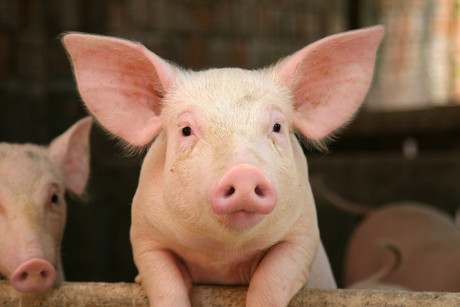Fighting Nipah virus

An international team of researchers from Australia, the UK, Malaysia and India is developing a prototype vaccine to reduce the impact of Nipah virus (NiV) on the pig industry.
NiV, usually found in Old World fruit bats, has the ability to cause severe, fatal illness in animals and people. In the late nineties, pig-to-human transmission created the first and most devastating NiV outbreaks in Malaysia and Singapore, causing over 100 human fatalities. This resulted in the culling of 45% of Malaysia’s pig population, costing the economy over US$650 million and losing 36,000 jobs. Malaysian pig farming is still restricted to ‘designated pig farming areas’, with pig husbandry activities being discouraged elsewhere.
The prototype vaccine being developed by scientists, led by The Pirbright Institute’s Dr Simon Graham, is expected to aid the control of outbreaks. UK’s innovation agency Innovate UK has already awarded a £2.5 million grant to Dr Simon Graham.
“The region at risk of NiV has some of the highest pig population densities found anywhere in the world, which are rising fast due to the demand of a growing human population. This increases the risk of NiV transmission to pigs and humans, which is why this work to generate effective vaccines is currently so important,” said Dr Simon Graham, leader of the Porcine Reproductive and Respiratory Syndrome Immunology group at Pirbright.
“The grant will help us build upon existing research and produce a vaccine that will give at-risk countries an alternative option to culling vast numbers of susceptible pigs during outbreaks. In addition to the welfare and economic advantages of vaccinating, this work will also provide a solid basis for further evaluating the vaccine for protection of humans against NiV infection.”
University of Queensland’s head of the School of Chemistry and Molecular Biosciences Professor Paul Young welcomed the grant from the UK Government’s Innovate UK initiative. “As well as minimising impact on the pig industry, a successful vaccine would prevent virus transmission to humans and therefore lower the risk to public health — a One Health approach to disease prevention,” Young said.
“The World Health Organisation, Wellcome Trust, Bill & Melinda Gates Foundation and others have identified Nipah virus as one of a number of potential global threats that could explosively emerge in the future, like the Ebola and Zika virus outbreaks of recent years.
“Nipah is a relative of Hendra virus and, like Hendra, can infect humans following transfer from bats through another host — in the case of Hendra, horses; and for Nipah, pigs.
“Our work will involve vaccinating pig populations against Nipah virus with a view to both protecting this important food resource in many countries as well as breaking the transmission cycle.”
The Pirbright Institute reached out to the UQ team comprising Professor Young, Dr Keith Chappell and Dr Dan Watterson for this collaboration, given their recent development of a novel vaccine platform technology that could be readily applied to NiV. Young said that while the natural host of the virus was fruit bats, infection in pigs increased the ability for the virus to transmit to humans and cause severe, often fatal, neurological disease.
Professor Young said that decreasing the major risk NiV posed to the developing pig industries, and to the livelihoods of poor livestock keepers in low- and middle-income countries of Southeast Asia, India, Bangladesh and Africa, was a key research aim.
The team also hopes the vaccine approach will provide a tool for the monitoring, control and elimination of the disease by enabling differentiation of vaccinated and infected animals. Engagement with affected countries is a vital part of the vaccine research, and the successful vaccine candidate will be trialled in NiV endemic regions of both Malaysia and India.
The project, ‘A Nipah vaccine to eliminate porcine reservoirs and safeguard human health’, was funded by the Innovate UK SBRI Vaccines for Global Epidemics — Clinical competition. The project partners are Dr Simon Graham, Dr Dalan Bailey and Dr Elma Tchilian, The Pirbright Institute, UK; Dr Teresa Lambe and Prof Sarah Gilbert, Jenner Institute, University of Oxford, UK; Dr Glenn Marsh, CSIRO Health and Biosecurity, Australia; Prof Paul Young, Dr Keith Chappell and Dr Daniel Watterson, University of Queensland, Australia; Dr Li-Yen Chang, University of Malaya, Malaysia; Dr Sharifah Syed Hassan, Monash University, Malaysia; Dr Ooi Peck Toung, University Putra, Malaysia; Prof Nagendra Nath Barman, Assam Agricultural University, India; and Dr Rüdiger Raue, Zoetis.
European Space Agency inaugurates deep space antenna in WA
The ESA has expanded its capability to communicate with scientific, exploration and space safety...
Black hole collision supports Hawking's landmark theory
Astrophysicists have witnessed a collision between two black holes that was so loud, they were...
Uncovering differences in wild and domesticated crops
Researchers have revealed insights into the genetic make-up of wild varieties of common crops...



